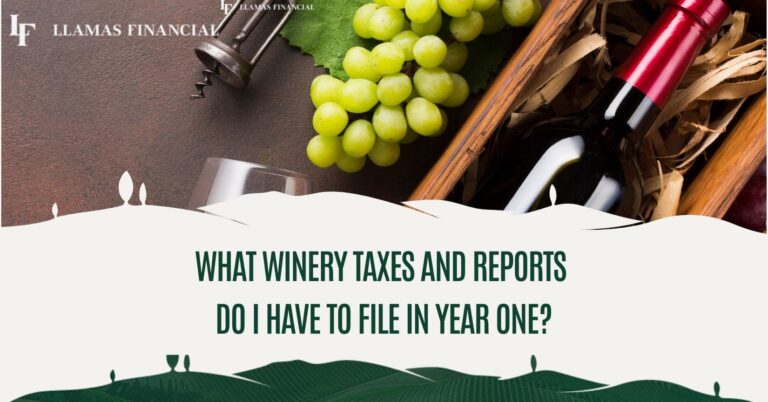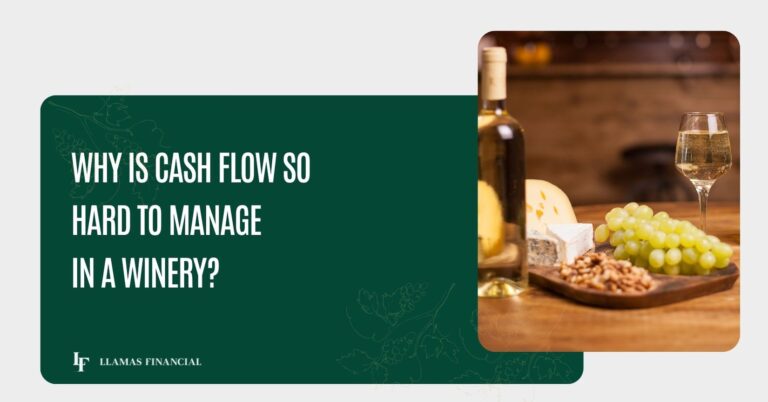When you’re running a winery, it feels like there are endless numbers to keep track of. Vineyard costs, case production, barrel expenses, tasting room sales, wholesale invoices, payroll, marketing spend — the list goes on. The problem is, not all numbers are equally useful. In fact, focusing on the wrong numbers can leave you feeling overwhelmed and distracted, while the most important indicators of your winery’s financial health go unnoticed.
The key to success isn’t tracking everything. It’s knowing which numbers actually matter, monitoring them consistently, and using them to guide your decisions.
Why Winery Owners Get Lost in the Numbers
Wineries are complex businesses. You’re part farm, part manufacturer, part retailer, and part hospitality. That means your financial data spans multiple industries at once. If you’re not careful, you can drown in spreadsheets and reports without ever getting clarity.
This is why having a winery accountant matters. Instead of showing you a mountain of data, a winery accountant narrows your focus to the handful of numbers that truly determine whether your winery is thriving or struggling.
The Three Numbers That Matter for Winery Success
1. Cost Per Case
This is the foundation. If you don’t know exactly how much it costs to produce a case of wine, it’s impossible to price your bottles correctly or measure profitability. Cost per case should include grapes, vineyard labor, barrels, bottles, labels, corks, and production labor. Many wineries underestimate this number by leaving out indirect costs, which leads to underpricing. When you have a clear cost per case, you can set prices with confidence and see whether your production decisions are paying off.
2. Gross Margin by Channel
Not all sales are created equal. Selling a $30 bottle in your tasting room might generate a $20 margin, while selling that same bottle through a distributor might only bring in $8. If you’re only looking at total revenue, you’ll miss the real story. Tracking gross margin by channel — tasting room, wine club, wholesale, and direct shipping — shows you where your profits are really coming from. This is often the number that helps winery owners decide where to invest time and resources.
3. Cash Flow
Revenue and profit margins mean little if you don’t have the cash on hand to pay for grapes, barrels, and payroll. Cash flow is the lifeblood of a winery. It tells you whether you can cover today’s expenses while waiting for tomorrow’s sales. Because wineries have such long lead times between production and revenue, cash flow forecasting is one of the most important tools a winery accountant provides.
Other Numbers Worth Watching
Once you’ve mastered the big three, there are supporting numbers that can help you fine-tune your strategy:
- Tasting Room Sales Per Visitor – Are you converting visitors into buyers, or just pouring samples?
- Wine Club Retention Rate – How many members are sticking with you year over year? Clubs are a major driver of stable cash flow.
- Operating Expense Ratio – How much of your revenue is being consumed by overhead like marketing, insurance, and admin?
- Inventory Turnover – Are you selling through vintages at a healthy pace, or is wine stacking up in storage?
These metrics add valuable context, but they shouldn’t distract you from the main drivers of profitability.
Why Tracking Too Many Numbers Can Hurt You
Some winery owners make the mistake of tracking dozens of KPIs, thinking more data will lead to better insights. The opposite usually happens. You get lost in irrelevant metrics and start second-guessing decisions. A better approach is to identify the 3–5 numbers that truly drive your business, then track those consistently.
Think of it like driving a car. You don’t need to constantly monitor every part of the engine. You just need to watch the speedometer, fuel gauge, and a few warning lights. Your winery’s finances work the same way.
How a Winery Accountant Helps
A winery accountant simplifies the complexity. Instead of giving you a generic set of reports, they tailor your financial system to highlight the numbers that matter most for your winery. They’ll build dashboards that show your cost per case, margins by channel, and cash flow forecast at a glance – so you can make decisions quickly and confidently.
With the right numbers in front of you, you can answer critical questions like:
- Should I expand my wine club or focus more on distribution?
- Am I covering my vineyard costs, or do I need to adjust pricing?
- Can I afford to buy more barrels this year without straining cash flow?
Takeaway
You don’t need to track every possible metric to run a successful winery. You just need to track the right ones, the numbers that give you clarity on costs, margins, and cash flow. With those insights, you can make better decisions and build a more profitable business.
At Llamas Financial, we help winery owners cut through the noise and focus on the numbers that actually matter. With a winery accountant guiding your reporting and analysis, your financial data becomes less overwhelming and far more useful.





